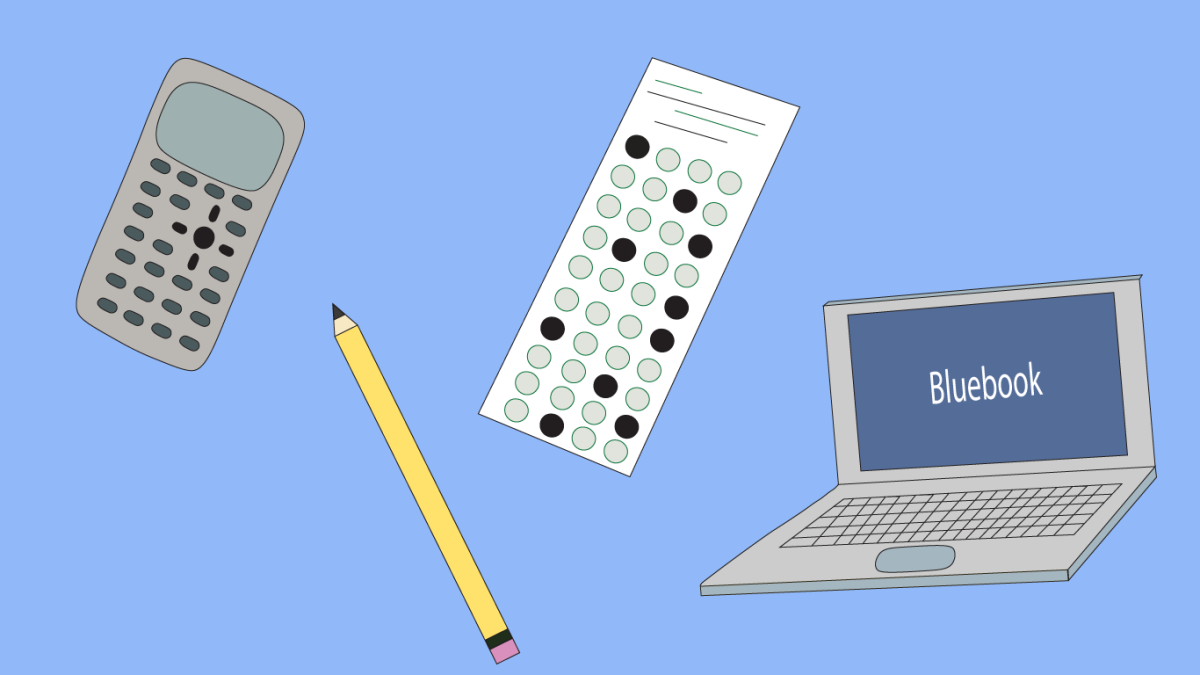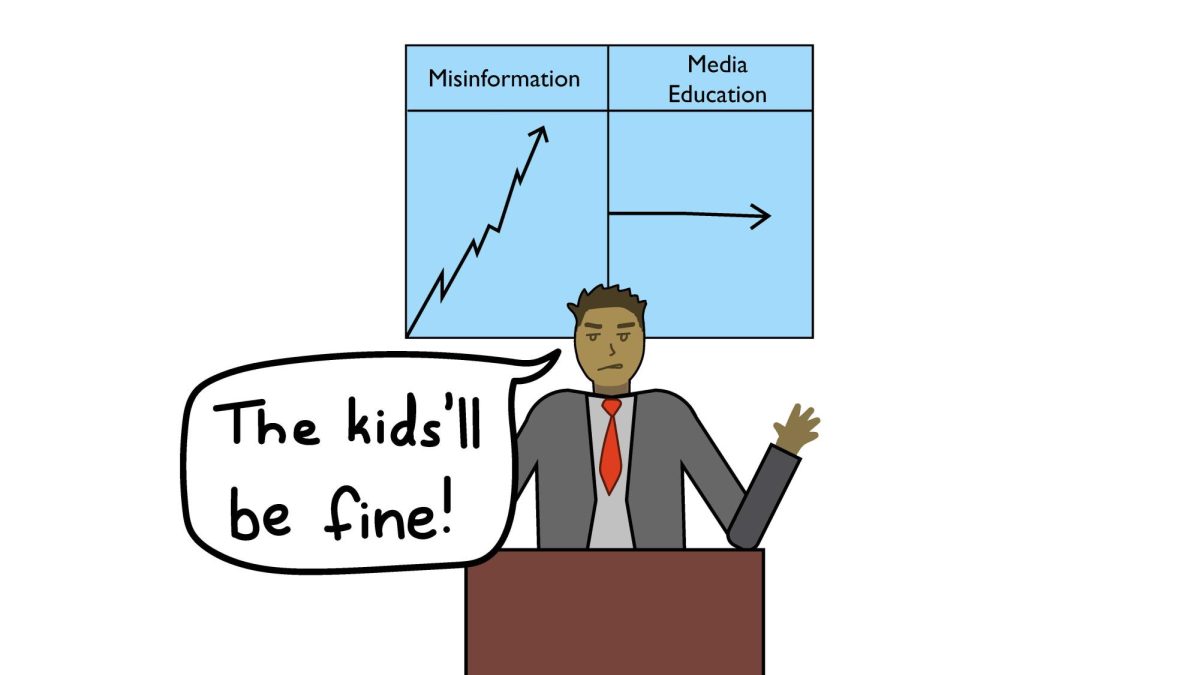Starting March 2024, the SAT will be administered digitally rather than the traditional paper format. Additionally, every device used to take the SAT will need to download Bluebook, a testing app from College Board. The test will be an hour shorter due to College Board’s use of adaptive testing. With adaptive testing, a student’s performance on the first module will determine the difficulty of the second module. Instead of separate reading and writing/language sections, there will be two English modules that contain both reading and writing/language questions. Students will now be allowed to use a calculator for both math sections.
Pro-paper
Switching from paper to computer will negatively alter students’ test performances. With the paper SAT, the test is graded by converting your raw score from each section. College Board takes your answers from each section and scores them on a scale for English and math from 200-800. In total, students can earn a score from 400-1600. In contrast, the digital SAT has four different modules; the test is graded differently and can cap your score after the first module. Additionally, College Board gives the option to purchase a study guide that is directed toward the digital SAT. This change means students will not be able to show their full potential to colleges, as they are more likely to get distracted in the digital format. The digital test will also be more costly and ineffective in demonstrating students’ capabilities to colleges.
Due to the combination of the reading and writing/language sections, the reading passages from the paper format will be shortened to single paragraphs. This change in formatting is not reflective of the skills that students will need in college. Students’ ability to comprehend long passages of texts is critical to academic success and learning. It should not be taken out of the SAT. Switching from a whole page of text to single paragraphs shortens students’ attention spans and could also lead to students running out of time as they are forced to constantly switch focus. Running out of time and leaving questions blank on the test will not showcase students’ capabilities to colleges.
When signing up for the SAT, students will see an option to purchase a study guide along with the test. Often, students can get away without having to purchase one for the paper test because there are other study options available online. However, due to College Board’s switch to digital and adaptive testing, they have released the “Official Digital SAT Study Guide.” College Board’s switch to digital testing is not because it will showcase students’ intellect more, rather it is a marketing move to make students believe they need to buy material to keep up with the new test changes. The SAT going digital will increase College Board’s revenue because students will buy the study guide directed toward the digital format. Now, students will not only have to pay for the test, but they will also have to pay extra for preparation materials.
Since the digital SAT uses adaptive testing, the test could produce harder questions in the second module, so the grading will vary based on each student because the test adapts to the accuracy of answers. Students who don’t perform well on the first module, which usually has easier questions, and later get the easier version of the second module will have a cap to their highest possible score. This does not reflect students’ mathematical capabilities, as many students in upper level math classes might not do as well on easier, first module algebra problems. Adaptive testing and capped scores are less representative of students abilities than the traditional paper SAT, in which students get equal opportunity to answer the same questions.
Fatigue from staring at a screen for too long can be a severe hinderance of student performance. Students can experience fatigue when looking at an electronic device for a lengthy period of time, according to the National Institute of Health. Clinicians often recommend the “20-20-20 rule,” which calls for people to look away from the screen at least every 20 minutes, while looking 20 feet away, for 20 seconds. Students will be too consumed by their computer screen to look up, leading them to fatigue. Fatigue from computer screens can play a crucial role in the students’ performance.
The SAT should stay in the paper format because students shouldn’t be forced to adapt to major changes that can poorly affect their SAT scores. These scores can determine a student’s future, whether it is getting into college or receiving scholarships. Ultimately, switching from paper to digital will not showcase students’ abilities. Rather, it will cap scores and expose students to more distractions, which will negatively impact their test results. College Board should switch back to a paper format.
Pro-digital
The SAT’s upcoming change in format from paper to digital will yield benefits for both schools and students. The paper SAT is incredibly tedious, requiring students to ensure each bubble is filled in perfectly with #2 HB pencils and flip between pages for three hours straight. College Board’s changes to the SAT will make testing easier and quicker for everyone, not to mention more accurate and straightforward.
While this new form of testing will mean students have to find new ways to study and prepare for it, these resources aren’t difficult to find or expensive to access. Just like for the paper SAT, Khan Academy offers official digital SAT practice that will help students understand what the test will entail and prepare for each section. Bluebook, the application the digital SAT will be administered on, also provides full practice tests for the SAT, giving students a realistic practice SAT experience. These resources are free and official and should provide accurate digital SAT preparation for students.
Not all students are at the same stage academically, and the digital SAT’s adaptive testing acknowledges that fact. With the second module in both sections, students should be getting questions that suit their depth of knowledge, so their score will showcase their actual ability.
One hindrance of the paper SAT is the Scantron sheets. With Scantron sheets, it’s easy to accidentally skip a bubble or fill in the wrong answers. The digital SAT format addresses this issue by isolating each question and providing an option to flag problems for review, so students can check at the end of the section and questions won’t be skipped or forgotten. This also ensures that a student’s score will accurately reflect their knowledge.
In previous years, if a student’s paper test was compromised in any way, College Board had recalled all students’ tests from the same time and location in an effort to ensure each score was accurate. With the digital SAT, students are not able to access any section except the one they are currently on. Every student has a unique test, and Bluebook allows proctors to monitor screens, which will prevent cheating and complications in the testing process. Since students use their results for scholarships and college applications, it is essential that their scores are authentic and demonstrate their true abilities to colleges.
Concerns about accessibility have emerged with the changes to the SAT. If a student tests with accommodations, College Board will offer paper and pencil format for their tests. If a student doesn’t own or have access to a device for their digital SAT, they can request one from College Board, and they provide one at the testing site for them on the day of their SAT.
All of the new features that come with the digital SAT have been put in place to make sure that taking the SAT will be as easy and straightforward as possible for both students and College Board. Ultimately, the change will allow students to receive the most accurate scores in a less draining and time-consuming experience.











